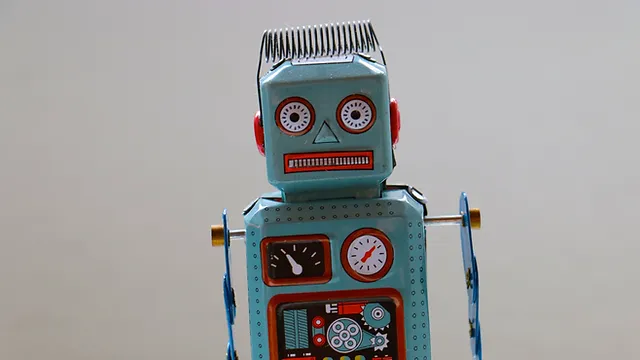ChatGPT 4o is the latest model released by OpenAI, and it is making waves in the AI community due to its impressive capabilities. This article will explore how ChatGPT 4o works technically, providing an overview of the model’s architecture and highlighting some of its key features.
At its core, ChatGPT 4o is a generative pre-trained transformer model that has been trained on a massive corpus of text data. This data includes everything from news articles and books to social media posts and internet forums. By training on such a diverse range of text, the model is able to generate human-like responses to a wide variety of prompts.
One of the most impressive aspects of ChatGPT 4o is its ability to handle multimodal inputs. This means that the model can accept prompts that are a mixture of text, audio, images, and video. To achieve this, OpenAI has developed a pipeline of three separate models. The first model transcribes audio to text, the second model takes in text and outputs text, and the third model converts that text back to audio. This pipeline is used in Voice Mode, which allows users to talk to ChatGPT with minimal latency.
Architecture of ChatGPT 4.0
Neural Network Models
ChatGPT 4.0 is a deep learning-based conversational AI model that uses a Transformer architecture. The model consists of a stack of Transformer encoder and decoder layers. The encoder layers are responsible for processing the input text and generating a hidden representation of the input sequence. The decoder layers take the encoder output and generate a probability distribution over the output sequence.
The Transformer architecture is known for its ability to capture long-term dependencies in sequential data. Each layer in the Transformer model is designed to attend to all positions in the input sequence, allowing it to capture complex relationships between tokens. This makes it well-suited for natural language processing tasks such as conversation generation.
Training Data and Processes
The ChatGPT 4.0 model was trained on a large corpus of text data from various sources, including books, websites, and social media platforms. The training data was preprocessed to remove noise and irrelevant content. The resulting corpus was then used to train the model using a variant of the unsupervised learning algorithm called the Transformer-XL.
During training, the model was optimized to minimize the negative log-likelihood of the target sequences given the input sequences. This was achieved using the backpropagation algorithm and the Adam optimizer. The training process was carried out on a cluster of GPUs to accelerate the computation.
Machine Learning Frameworks
ChatGPT 4.0 was developed using the PyTorch deep learning framework. PyTorch is a popular open-source machine learning library that provides a flexible and efficient platform for building deep learning models. It allows developers to define complex neural network architectures using a simple and intuitive syntax.
PyTorch also provides a range of tools for training and evaluating deep learning models, including automatic differentiation, distributed training, and model serialization. These tools make it easy to train and deploy large-scale deep learning models such as ChatGPT 4.0.
Operational Mechanisms
Tokenization and Encoding
ChatGPT 4o uses tokenization to break down the input text into smaller units called tokens. These tokens are then encoded into numerical values, which can be processed by the neural network. OpenAI uses the Byte Pair Encoding (BPE) algorithm to tokenize the text, which is a common technique in natural language processing. BPE works by iteratively merging the most frequent pairs of tokens until a predefined vocabulary size is reached. This allows ChatGPT 4o to handle a wide range of text inputs, including rare words and misspellings.
Decoding and Language Generation
After the input text has been tokenized and encoded, ChatGPT 4o uses a transformer-based neural network to generate a response. The transformer network is trained on a large corpus of text data and learns to generate responses that are coherent and relevant to the input text. The response is generated by decoding the output of the neural network, which is a sequence of encoded tokens. The decoded sequence is then converted back into natural language using the BPE algorithm.
Reinforcement Learning from Human Feedback (RLHF)
To improve the quality of its responses, ChatGPT 4o uses a technique called Reinforcement Learning from Human Feedback (RLHF). This technique involves presenting the system’s responses to human evaluators and using their feedback to adjust the neural network’s parameters. The system receives a reward signal for generating responses that are rated highly by human evaluators and a penalty for generating responses that are rated poorly. This allows ChatGPT 4o to learn from its mistakes and improve over time.
In summary, ChatGPT 4o uses tokenization and encoding to process input text, a transformer-based neural network to generate responses, and RLHF to improve the quality of its responses. These operational mechanisms allow ChatGPT 4o to generate natural language responses that are relevant and coherent to the input text.
Applications and Use Cases
ChatGPT 4o is a powerful language model that can be used to create conversational interfaces, summarize content, translate languages, and more. Here are some of the most common applications and use cases for ChatGPT 4o.
Conversational Interfaces
One of the most popular applications of ChatGPT 4o is creating conversational interfaces. ChatGPT 4o can be used to create chatbots, voice assistants, and other conversational agents that can interact with users in natural language. This is useful for a wide range of applications, from customer service to personal assistants.
Content Creation and Summarization
ChatGPT 4o can also be used to create and summarize content. For example, it can be used to generate high-quality content for websites, blogs, or social media platforms in a matter of seconds. This includes creating content like product descriptions, blog posts, social media posts, and even entire articles. Additionally, ChatGPT 4o can be used to summarize long pieces of text, making it easier to digest and understand.
Language Translation
Another useful application of ChatGPT 4o is language translation. It can be used to translate text from one language to another, making it easier for people to communicate across language barriers. This can be useful for businesses that operate in multiple countries, as well as for individuals who need to communicate with people who speak different languages.
Overall, ChatGPT 4o is a powerful tool that can be used for a wide range of applications. Its ability to understand and generate natural language makes it a valuable asset for businesses and individuals alike.




